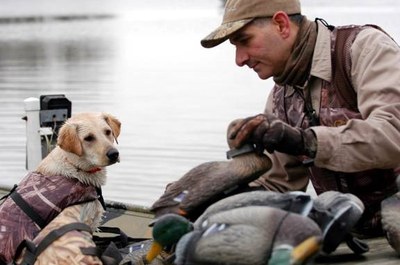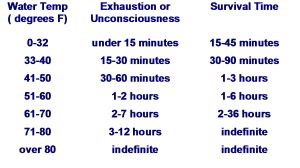Waterfowl Hunter Boating Safety
General Assessment of Risk
 Using a boat as a hunting blind, to set decoys or just to get to the blind, has a greater degree of risk associated with it, than hunting on land.
Using a boat as a hunting blind, to set decoys or just to get to the blind, has a greater degree of risk associated with it, than hunting on land.
Duck Hunters in Texas developed this tool to objectively assess the risk based on six factors present when the hunting party is about to get underway and to enable decision making based on the degree of risk involved.
The six factors are:
- Weather (air temp, wind speed, forecast, etc.)
- Water / Sea Conditions (water temp, waves, etc.)
- Boating Experience of Members (# of years, float plan filed, boater safety course, etc.)
- Hunting Experience of Members (# of years, hunter safety course, etc.)
- Fitness / Disabilities / Medical Conditions of Members
- Boat / Equipment Condition (hull size, hull type, loading, emergency equipment onboard, etc.)
The hunting party should discuss and agree on a risk value to assign to each of the factors (1=Low Risk; 10=High Risk). The risk value assigned to each factor should be agreed upon by all members of the party; not just an average of individual members’ assigned values. The opinions of each member should carry equal weight in the decision making.
Once a risk value for each factor has been agreed upon, the value should be entered in the appropriate space on the General Assessment of Risk score card.
Once a risk value has been entered for each of the six risk factors, they should be added together to obtain a Total Risk Value.
Dogs
Dogs in a boat create additional risk:
- Dogs accustomed to riding in boat & with a dog life jacket = add 2 points to Total for each dog.
- Dogs unaccustomed to riding in boat or without a dog life jacket = add 4 points to Total for each dog.
Any time conditions change during the boating / hunting activity, a reassessment of the risk value assigned to each factor should be undertaken and a new Score obtained. Compare the new score with the previous score to see if a trend is occurring.
The Score determines where on the spectrum your RISK lies. This information should be used by the hunting party to make decisions on how to proceed.
Red and Yellow
The hunting party should implement measures to reduce the risk factors. At any time the risk assessment moves into the red zone, cancellation or postponement of the Hunt should be a consideration.
The hull type is a major consideration. Flat bottomed utility boats are the most common used in waterfowl hunting. They allow easier access to shallow water. But, small flat-bottom boats are more prone to capsizing and increases the risk.
Proper use of safety equipment is a factor.
Having a Life Jacket onboard is required by law but wearing a Life Jacket significantly reduces risk factors.
Exposure is a significant factor. Hypothermia can lead to death in less than an hour, even in 60 degree water.
Always implement measures to reduce risk. It does not mean simply lower assessed values in selected factors, but take positive actions to lessen the actual risk in factors over which you have some measure of control.
Hypothermia
Symptoms
 Shivering
Shivering- Bluish lips and fingers
- Loss of feeling in hands and feet
- Cold bluish skin
- Decreased mental skills
- Slurred speech and blurred vision
- Rigidity in hands and feet
- Unconsciousness